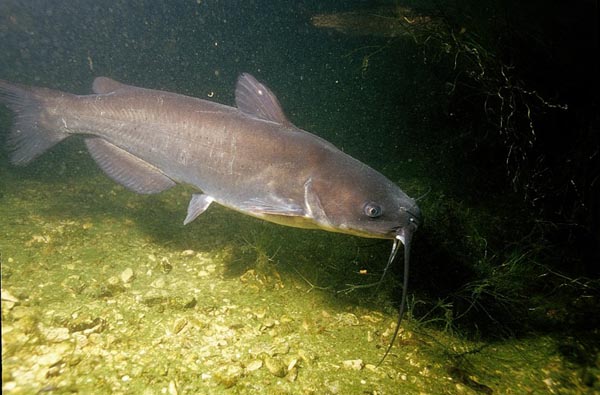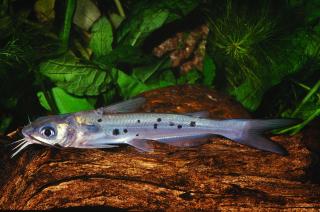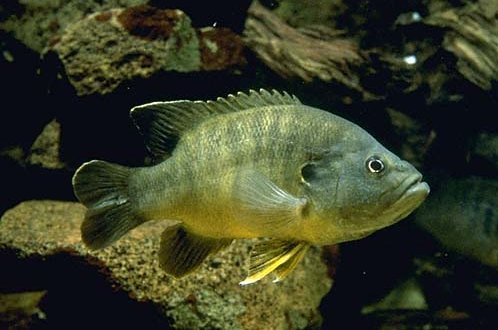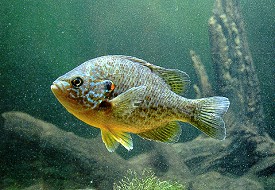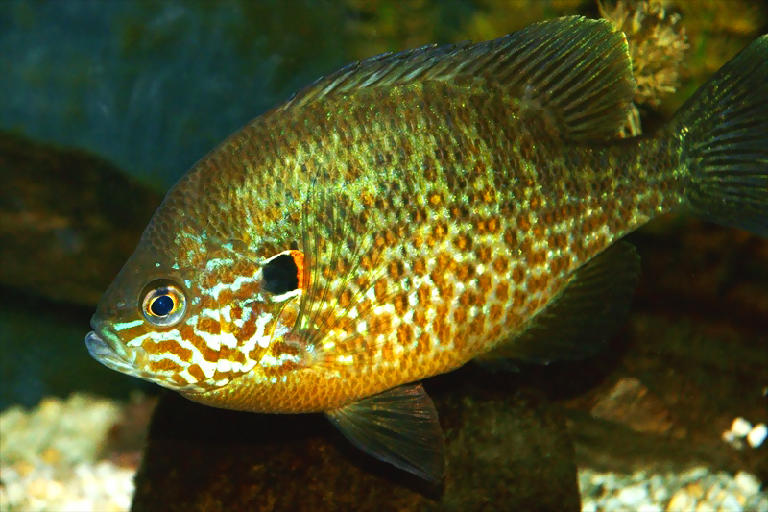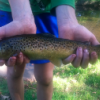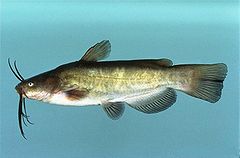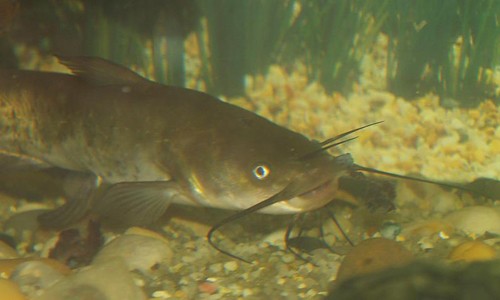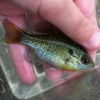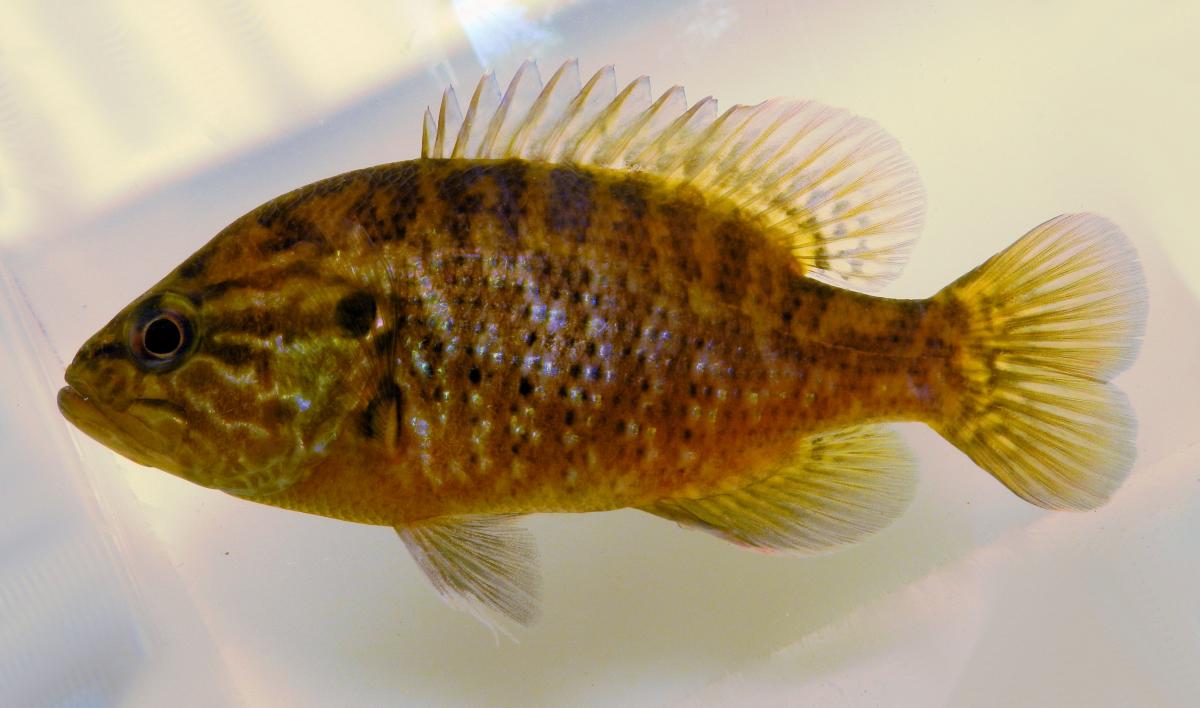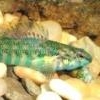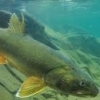
Native Fish Care Sheets
#1

Posted 30 March 2014 - 11:47 AM
Hey guys, looking around the internet I noticed how VERY few native fish care sheets or information there is other than on the few forums such as this and a few native YouTubers. Being that natives are so great I figured that we as native keepers, past native keepers, native experts, and maybe even fishermen that know extensively about the fish should make some nice care sheets so that people looking to get into natives can have a good and reliable knowledge source. You guys can post about ANY US native fish you want. From pygmy sunfish to paddlefish there are so many care sheets that can be made! Please keep non-care-sheet replies to a minimum if possible as to keep the thread profesional. Some things that I and many feel it is important to include would be max size, tank size (or dimensions), temperature, and ph. Those are very important but please feel free to include as much other info as you would like to. I will make the first care sheet to kick this off and in case others would like an example of formatting for them.
#2

Posted 30 March 2014 - 11:59 AM
Scientific Name: Ictalurus punctatus
Temperament: Peaceful (towards fish it can't fit in its mouth)
Max Size: Anywhere from 18"-48"
Tank Size: Depending on adult size, 180-1,000+ gallons
Origin: Most of US and parts of Mexico (most at LFSs are farm raised)
Experience: Moderate
Temperature: Ideally 60-82 F
pH: 6.0-8.0
Feeding: Omnivore (feed mostly meaty foods)
Tank Mates: Larger Leps, Black Bass, Yellow Perch, Walleye, Bullheads, Other Channels, and even some larger SA or CA Cichlids.
Behavior: More dependent on the individual fish. Mostly nocturnal although they can be trained to come out during the day and even top feed! They don't bug other fish for the most part but like all catfish don't trust them with any fish that can fit in their mouth such as minnows or darters.
Edited by Everything Fish, 30 March 2014 - 12:00 PM.
#3
 Guest_Erica Lyons_*
Guest_Erica Lyons_*
Posted 31 March 2014 - 12:41 PM
Scientific Name: Elassoma genus. Species include okefenokee, gilberti, evergladei, zonatum, etc. This care sheet will provide specific information about elassoma gilberti, a species recognized as distinct from elassoma okefenokee in 2009 after a publication by Snelson, Krabbenhoft, and Quattro, but is applicable to all pygmy sunfish.
Temperament: Peaceful, will hide from larger fish
Max Size: 1"
Tank Size: Any size not susceptible to ammonia spikes. Due to the minimum filter size available to most aquarists being 10 gallon filters, 10 gallon aquariums are a convenient tank size. Smaller tanks whose ammonia is removed by aquatic plant growth are also suitable. There is no maximum tank size. Male pygmy sunfish in a 55 gallon tank claimed territories of approximately a third square foot to a square foot. Seven or more males would be visible dancing at one time.
Origin: Depends on the species. Elassoma okefenokee and gilberti are from Florida and southern Georgia (gilberti in the gulf coast drainages and okefenokee in the Atlantic drainages). Elassoma zonatum is found in most of the Eastern and Southern United States.
Experience: Because local pet stores now carry frozen bloodworm cubes, this can be a beginner level fish as long as the aquarist is aware they won't eat flake food.
Temperature: Will spawn from 60-90 F
pH: 3.0-8.5 Elassoma okefenokee is named after the okefenokee swamp, where pH can be as low as 3. I have spawned Elassoma gilberti in pH 8
Hardness: I have spawned elassoma gilberti in both 0 DH and 17 DH water.
Adult feeding: Thawed frozen bloodworms, blackworms, live grindal worms, baby snails. Others have said they accept brine shrimp but I didn't see them react to them. They did not eat thawed frozen tubifex worms when I tried those. Will not breed on a diet of flake food or Ken's Golden Pearls.
Fry feeding: Vinegar eels, microworms, baby brine shrimp, copepods, rotifers, etc.
Tank Mates: Any fish larger than one inch (the maximum length of an elassoma) will scare them into hiding.
Behavior: A male claims a territory, darkens up, and chases other males away from his territory. Females are wooed by the male's dancing into his territory and spawn. Males guard the sinking eggs for around three days, then become receptive to spawning again.
Spawning: Easy. Will spawn continuously if well fed. The trick to getting babies is to remove the adults. This can easily be accomplished by having two 10 gallon tanks. Remove the parents after you see fry or after two months in a tank, whichever comes first. Put the adults into the second tank and feed the fry in the first tank even if you can't see them.
Fecundity: Maurice F. Mettee and Christopher Scharpf published in the Winter (Feb.) 1998 issue of American Currents that the fecundity range is 20-25 for elassoma okefenokee, 25-30 for evergladei, 60-65 for alabamae, and 20-68 for zonatum.
Lifespan: One year on average, maximum two years or so.
Female elassoma gilberti:
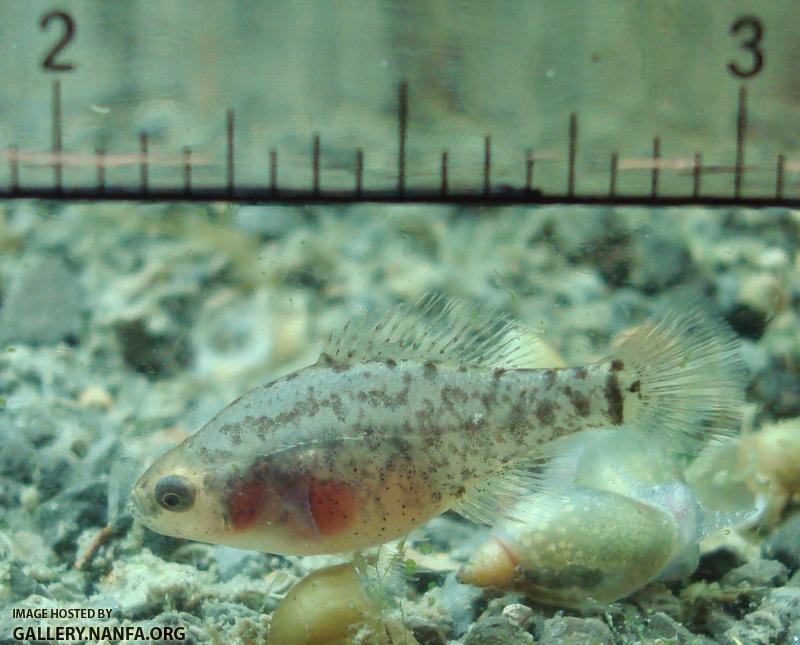
http://gallery.nanfa... photo.jpg.html
Male elassoma gilberti:
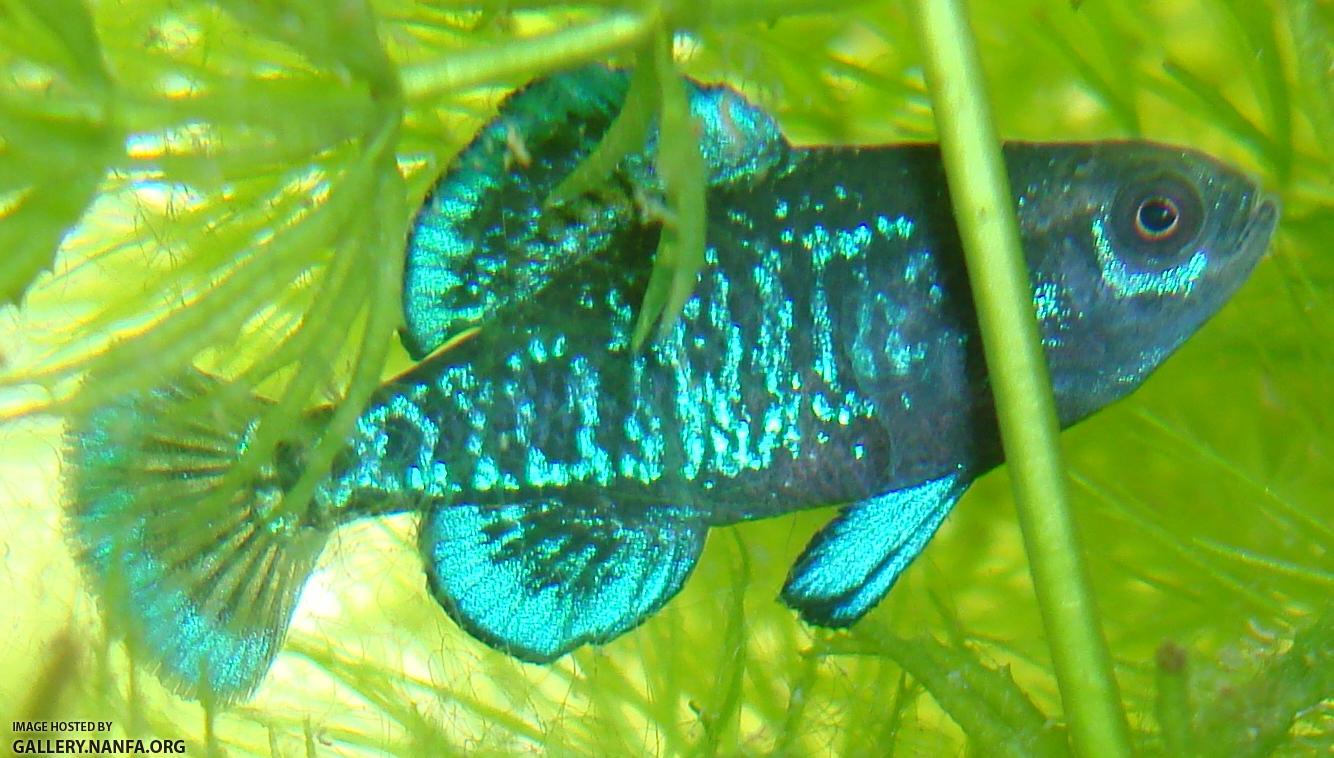
http://gallery.nanfa...resize.jpg.html
Dominant versus submissive male. Note the female near the ground:

http://gallery.nanfa...ze_001.jpg.html
#4
 Guest_bigfishfarms_*
Guest_bigfishfarms_*
Posted 04 April 2014 - 01:01 PM
Scientific Name: Polydon Spathula
Temperament: Peaceful
Max Size: Wild: 150 pounds, Captive, 10 pounds
Tank Size: 100 gallons to pond culture
Origin: Mississippi Drainage basin
Experience: Intermediate
Temperature: 54-68. Will tolerate to 80
pH: 6.6-8.0 Does not tolerate ph swings
Feeding: zooplankton. May be pellet-trained using floating pellets 35% protein, 15% fat. Will also eat smaller live food.
Tank Mates: Any docile, non-nipping fishes of similar size.
Behavior: Contrary to popular opinion, paddlefish can be successfully kept by an intermediate to advanced aquarist. Numerous fish have been successfully kept in tanks as small as 100 gallons. Light feeding will keep these prehistoric monsters at a manageable size for many years. Preferring moving water and no direct sunlight, polydon spathula will tolerate low oxygen levels ( 2% at 77°f) and high nitrite levels (8-9 with 2 ppt salt to combat brown blood disease). Keep single size class or they will display predatory behavior. Paddlefish are regulated or threatened in many states. Know your state laws before attempting to collect wild fish. Aquarium-grade fish periodically appear on the mail-order market. PM NANFA member Moontanman for his experience on raising these docile dinosaurs.
#5

Posted 04 April 2014 - 05:06 PM
Name: Green Sunfish
Scientific Name: Lepomis cyanellus
Temperament: Semi-Aggressive, normally peaceful with similar sized fish but you will occasionally find rogues
Max Size: 7-12"
Tank Size: 55 Gallons for a Single Specimen
Origin: Most are East of The Mississippi River
Experience: Beginner
Temperature: Ideally 66-78 F
pH: 6.8-7.5
Feeding: Omnivore. Nightcrawlers, redworms, minnows, small fish fillets. If raised from a young age most can be trained on cichlids pel;ets fairly easily.
Tank Mates: Larger Leps, Black Bass, Yellow Perch, Sander Species, Most Native Catfish, and they are also growing in popularity to be kept with larger Central Amercian Cichlids.
Behavior: They are normally very owner responsive, outgoing fish but you may occasionally get a skittish one or even a rogue that won't tolerate tankmates.
#6

Posted 06 April 2014 - 06:37 PM
Name: Pumpkinseed
Scientific Name: Lepomis gibbosus
Temperament: Semi-Aggressive, don't trust with smaller fish such as shiners
Max Size: 8-12"
Tank Size: 75 Gallons with one or two similarly sized tankmates
Origin: NorthEast and Midwest Mainly
Experience: Moderate
Temperature: Ideally 66-78 F
pH: 6.8-7.5
Feeding: Omnivore. Most can be trained onto cichlid pellets from a young age. Redworms, nightcrawlers, feeder minnows and other meaty foods are good as well.
Tank Mates: Other similarly sized Sunfish, SMBs or LMBs that can't fit the pumplikseed in their mouth, Yellow Perch, Most Ictalurids, and similarly sized CA or SA Cichlids.
Behavior: Very personable towards their owner if raised from young. If caught as an adult they may be grumpier. Very good addition for a larger native community of similarly sized sunfish, bass, catfish, perch, etc.
#7
 Guest_Erica Lyons_*
Guest_Erica Lyons_*
Posted 06 April 2014 - 07:33 PM
Scientific Name: Heterandria formosa
Temperament: Peaceful, appropriate for community tanks
Max Size: Females approximately 1", males a little bit smaller
Tank Size: Any size not susceptible to ammonia spikes. I kept and bred them in a 3" x 2' x 1.5' tank that was ammonia-cleaned by growing plants. Video: youtu.be/-uIvjlV6Z38
Due to the minimum filter size available to most aquarists being 10 gallon filters, 10 gallon aquariums are a convenient tank size. Smaller tanks whose ammonia is removed by aquatic plant growth are also suitable. There is no maximum tank size.
Origin: Florida and the coastal freshwater of surrounding states from Texas to North Carolina.
http://nas.er.usgs.g...x?SpeciesID=852

Experience: Easier than guppies, fry are born large enough to accept the same crushed flake food as their parents and smart enough to hide from them. I've seen my heterandria formosa fry sit on a hydrocotyle leucocephala leaf right up under the water's surface to hide from the larger fish below. Guppy babies will swim out into open area and get themselves eaten; heterandria formosa babies are born with the presence of mind to hide and survive. So heterandria formosa are easier to raise and breed than guppies.
Temperature: Have spawned in my tank from 60-90 F
pH: My pH was around 7. Florida is notable for its okefenokee swamp, where the pH is around 3. These fish would probably also do well at higher pH but I haven't personally tested that.
Hardness: My water was very soft, around 3 DH, but just because I haven't personally tested it doesn't mean these fish don't do well at higher hardnesses.
Adult feeding: Fish flake, crushed a little bit because they have very small mouths, being one inch long maximum fish.
Fry feeding: Flake, crushed a bit to accommodate their small mouths.
Tank Mates: Any that won't eat them. Heterandria formosa are not fin nippers and did not nip the delta tails of my show guppies, living with them quite peacefully.
Behavior: Males stalk females and attempt to sneak spawn with them. Special note: This is the easiest fish to catch that I have ever kept. Human hands can swoop a net much faster than they can swim away.
Spawning: Easy. Will spawn continuously if well fed.
Fecundity: Females give birth around every other day to a fry or two.
Lifespan: Unknown, difficult to keep track of one fish in a constantly expanding colony.
I kept the gold variety. Here are some pictures of my fish.
Female:
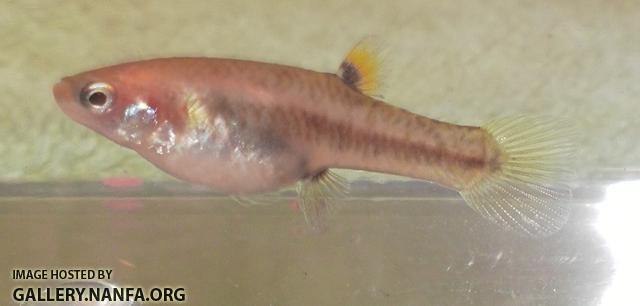
http://gallery.nanfa... left6.jpg.html
Scale bar shows size of a dozen of them:
http://gallery.nanfa...23_002.JPG.html
Their appearance varies greatly, with some having vertical stripes, some having horizontal, some having freckles. I should note that my gold ones gained freckles and horizontal stripes after about a year. I have no idea how they did that, with no outside genetic contribution.
#8
 Guest_smbass_*
Guest_smbass_*
Posted 15 April 2014 - 03:31 PM
Keeping Sunfish in the Home Aquarium
Sunfish (Family Centrarchidae) are a unique family of fishes naturally occurring only in North American. The family currently includes 37 or 39 (April 2014) currently recognized species depending on which list you follow and multiple species have several recognized subspecies. There are 8 genera within the family; Acantharchus(1 species), Ambloplites(4 species), Archoplites(1 species), Centrarchus(1 species), Enneacanthus(3 species), Lepomis(13 species), Micropterus(12 -14 species), and Pomoxis(2 species).
The black basses (Micropterus) for the most part are best left to the Bass Pro Shops and Cabella’s tanks unless you happen to have access to the Redeye Bass species group which stay well within manageable tank size of typically 8-10”. These small bass are very territorial with one another but do well as a single fish in with a group of larger Lepomis sunfish. Unless you are willing to dedicate a single 180 gallon or larger tank to a single fish I would advise against keeping the other larger black basses.
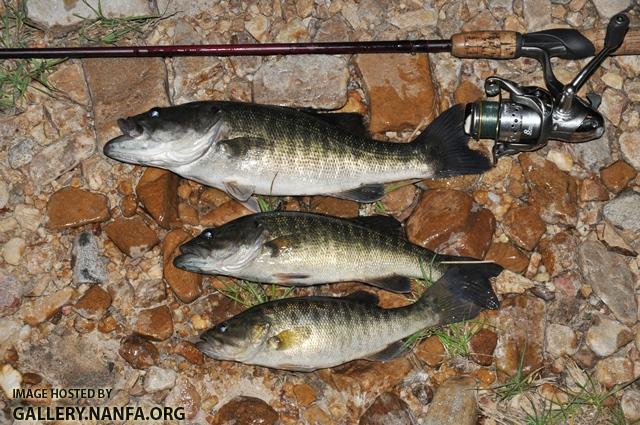
Shoal Bass Micropterus cataractae

Coosa Bass Micropterus coosae
Suwannee Bass Micropterus notius
Crappies (Pomoxis) are not real territorial but do get rather large and I would suggest a 75 gallon or larger tank for just 2-3 fish. They rarely pellet train well and require live or large frozen foods to do well long term in captive care.
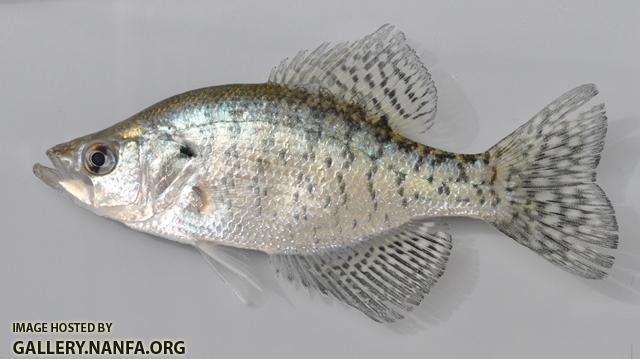
White Crappie Pomoxis annularis

Black Crappie Pomoxis nigromaculatus
The Mud Sunfish (Acantharchus pomotis) and Sacramento Perch (Archoplites interruptus) are extremely difficult to come by and probably only for those who find themselves extremely interested in sunfish. Neither of these are difficult to keep in captivity because they are less territorial than most sunfish. Mud Sunfish are hard to pellet train and do best on live or appropriate sized frozen foods. Sacramento Perch pellet train very easily. They also can get very large (24”) but grow rather slowly and average a similar size to a Redear Sunfish or crappie at 10-15”.
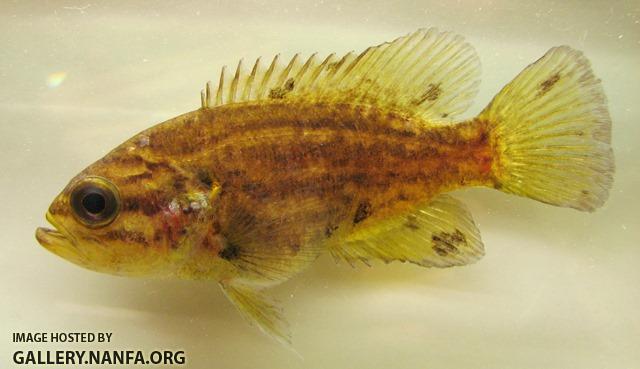
Mud Sunfish Acantharchus pomotis
Sacramento Perch Archoplites interruptus
The rock basses (Ambloplites) are very predatory and do not train well to pellets and need to be fed large frozen food items or live food. Two species, the Rock Bass (A. rupestris) and Roanoke Bass (A. cavifrons), get rather large often reaching 10-14” and average about 8” in length. The other two species, the Shadow Bass (A. ariommus) and Ozark Bass (A. constellatus), are more appropriate size wise for a home aquarium reaching only a maximum of 8” and averaging about 6. Of these two the shadow bass is more widespread and easier to acquire. As a group they are somewhat reclusive fish and like to hide in driftwood or plants much of the time. Their “chameleon like ability” allows them to blend into driftwood, rocks, or plants quite well where they lie in wait for their next unsuspecting meal. They are not as territorial as most Lepomis species group but do have some territorial tendencies. Minimum space requirements would depend on species but they work well in a mixed sunfish community in a 75 gallon or larger tank. A single fish can be kept in a smaller setting without an issue.
Ambloplites ariommus
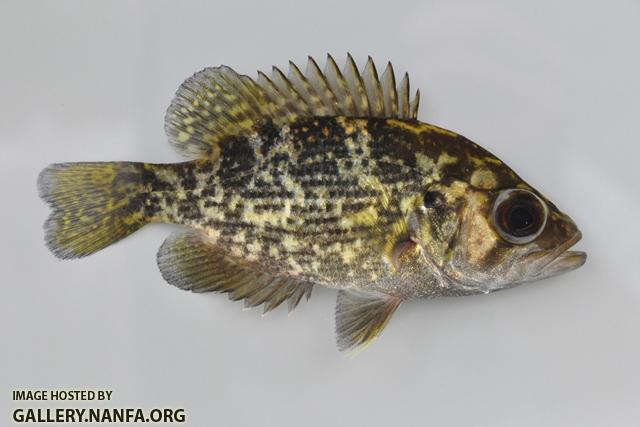
Ambloplites cavifrons
Ambloplites constellatus
#9
 Guest_smbass_*
Guest_smbass_*
Posted 15 April 2014 - 03:32 PM
Ambloplites rupestris
The Flier (Centrarchus macropterus) is a unique sunfish that has very large symmetrical dorsal and anal fins and as young have a large eye spot with a red halo on the rear part of the dorsal fin. They are a rather shy fish as well and not very territorial. This species much like the rock basses does not train well to pellets and needs to be fed large frozen food items or live food. They also do not get real large with a maximum size a little under 8” and average 4-6” as adults. Their appearance is quite similar to a crappie and they are similar behaviorally as well but their much smaller size makes them a much more suitable aquarium fish. This is probably the least territorial of the lager sunfishes and can easily be kept in a community tank as long as the tank mates are too big to be food.
Flier Centrarchus macropterus
The three (Enneacanthus) species are excellent aquarium fish. These are the smallest true sunfish, not to be confused with the pygmy sunfishes (family Elassomatidae). The Bluespotted Sunfish (E. gloriosus) has brilliant blue spots that fluoresce under good lights and only reaches about 3.5-4”at most. The Banded Sunfish (E. obesus) also has blue-bluegreen markings that show up well under lights as well and may occasionally reach 4-5”. The final member of this group, one of my favorites, the Blackbanded Sunfish (E. chaetedon) has a striking silver background with black vertical bars and black pelvic fins with a yellow to orange leading edge. This is the smallest true sunfish never exceeding 3”. It also is very active and does nicely in a well planted aquarium where they swim around in the open above the plants with erect fins. This species was once popular in the early US aquarium trade and was known as the poor man’s angel fish because of their striking similarities in appearance and behavior to the expensive to import (at the time)angelfish. The other two species, particularly the bluespotted can be rather shy and like to hide in the plants. These three are very docile fish and can be kept with a wide variety of other non-aggressive fish that like a planted community tank. They do well being fed a variety of frozen foods such as blood worms, mysis shrimp, or mosquito larvae. Many sources indicate that these fish require very soft acidic water and live food, neither of these things are true. I have quite hard water with a high pH and only on occasion give them a treat of live blackworms or daphnia. I think the perception of them requiring a low pH comes from their ability to tolerate these conditions in the wild better than most other fish. This allows them to live in very acidic waters that lack many predators. As a result you find thriving populations of Enneacanthus in these conditions but it is hardly a requirement for their survival. I have had some of my best spawns of these in densely planted water garden ponds with a pH of 8.5-9. A good tank size for a group of these is a 20 long as a minimum. I personally keep a display in a 40 breeder with 2-3 of each species as the main feature along with other peaceful vegetation loving fish.
Blackbanded Sunfish Enneacanthus chaetedon
Bluespotted Sunfish Enneacanthus gloriosus
Banded Sunfish Enneacanthus obesus
The final and most colorful group of sunfishes is the Lepomis group. This group includes 13 recognized species and many subspecies. The adult males of any species in this group can be quite territorial but also rival any tropical fish with their beautiful coloration. They range in size from the rather large redear sunfish down to the tiny orangespotted sunfish. They also range in aggression from the longear, dollar and green, down to the warmouth bantam and orangespotted. Here are the 13 species with the approximate adult size…
Redear Sunfish Lepomis microlophus (2 different subspecies or forms exist) 10-15”
Bluegill Sunfish Lepomis macrochirus (2 or three subspecies of forms exist) 8-12”
Redbreast Sunfish Lepomis auritus 8-12”
Pumpkinseed Sunfish Lepomis gibbosus 8-10”
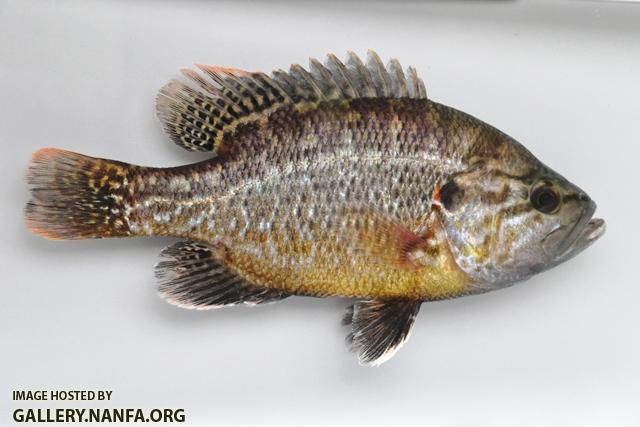
Warmouth Sunfish Lepomis gulosus 8-10”
#10
 Guest_smbass_*
Guest_smbass_*
Posted 15 April 2014 - 03:33 PM
Redspotted Sunfish Lepomis miniatus 6-8”
Blackspotted Sunfish Lepomis punctatus 6-8”
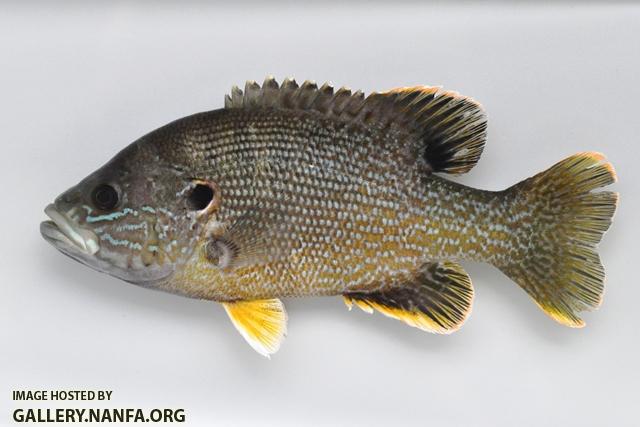
Green Sunfish Lepomis cyanellus 6-8”
Longear Sunfish Lepomis megalotis (4-6 subspecies or forms exist and vary in size) 5-8”
Dollar Sunfish Lepomis marginatus (3 different subspecies or forms exist) 3-5”
Northern Longear Sunfish Lepomis peltastes 3-5”
Bantam Sunfish Lepomis symetricus 2-4”
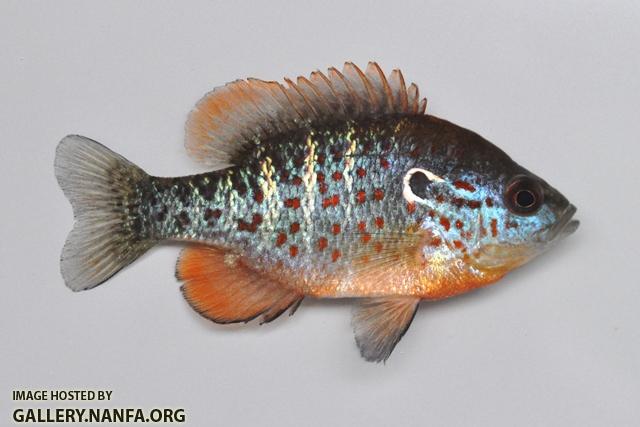
Orangespotted Sunfish Lepomis humilis 2-4”
If your intention is not to breed the fish but just simply keep a community of them and enjoy them then there is no reason not to have a mixed group with multiple species, subspecies, or forms. The tank should be made as complex as possible having lots of driftwood, rocks, plants or other hiding places. Plan to have a minimum of 6 adult fish. With fewer than this 1 fish often becomes very dominant over the rest and does harm or even kills the tank mates. It is ok if they chase one another all over the tank if no harm is done and no one fish gets too stressed out. Keeping just 2 or 3 Lepomis sunfish together never goes well you need to spread the aggression of the dominate fish out to as many recipients as possible. A good minimum Lepomis sunfish tank is a standard 55 or 75 gallon tank. The smallest two species can be kept in smaller tanks but I would recommend a minimum of a standard 29 gallon tank for a group of them. A single individual of any of these species can be kept in smaller aquariums but I would advise against trying to keep more than one in a small tank and for all but the two smallest a minimum of a 20 long for a single fish, with the two small ones a single fish would work in a 10 gallon tank as a minimum. On the large end of the Lepomis spectrum, I would not keep a group of 6 Redear Sunfish in a 55 and would give a single Redear Sunfish at least a 40 breeder. It is possible in a large enough tank to have all 13 species coexist if you keep about 1 fish for every 10-15 gallons and have a very complex setup within the tank. I would not attempt this in anything smaller than a 150 gallon tank. I maintain such a setup in an 8ft long 200 gallon tank with about 15-20 fish in the tank at all times. If you are keeping some of the smaller species you can stock them even denser than 1 per 10 gallons of water in a large tank, particularly with the smallest two which also happen to be the least aggressive. These two can also be mixed with the 3 Enneacanthus species in a larger setting with lots of hiding places.
All Lepomis species will train well to pellets and other prepared foods but will also do well on a varied diet of frozen or live foods that are size appropriate. Good choices include earthworms, shrimp, live crickets, krill, blackworms, mysis shrimp, blood worms, mosquito larvae, or any number of other similar items. They are not picky eaters. Many of these species have brilliant colors and show them best when well fed and kept at room temperature.
If you are starting out with young fish and want them to grow quickly they will do so best with good water quality, fed twice a day, and kept at a temperature of 75-80 degrees F. At these conditions tiny half inch long sunfish can reach maturity in 6-8 months! Start out young fish on frozen blood worms or other small food items. For very small individuals you can use a razor blade to chop up food into small pieces or use live food. As they grow gradually increase the size of the food items. Growth is also usually faster on a pellet based diet rather than frozen or live foods. I assume this is just due to greater calorie intake. I have also noticed with growing out various Lepomis sunfish is that there appears to be some interactions going on between fish during grow out that are not obvious but affect the growth rate. It seems there is some sort of chemical or hormone cues going on when they are kept in a group. I am most successful at growing out a group of fish the fastest when I am able to give them a lot of space and every month or so split them up into different size groups keeping all the fish in the same tank nearly identical in size. It seems if one or two fish start to outgrow the others that dominance is established very early on and the other fish in the tank slow down their growth. This does not seem to have anything to do with how much food they are getting which is why I think there is some non-visual chemical signal or cue going on. So by preforming frequent water changes and moving fish around from tank to tank to keep them all very similar in size you can stop this from happening.
If you intend to breed any of these it is best to have a species only tank because similar species or especially two strains/subspecies of the same species will hybridize quite easily. It also is good to again keep a group of at least 6 fish in a complex set up. I like to have more females than males but this is not absolutely necessary. For breeding keep the tank around 72-75 F and feed them well. Watch for the males to dig out a shallow circular nest with their tail. They will aggressively defend this area and if you see a male and female swimming in a tight circular pattern over the nest they are spawning. The male will guard the eggs and young until they begin to swim or hop around but will eat the young once they become free swimming. At this time if you would like to raise some of the young either remove the adults or use a siphon and suck some fry out into a bucket. Put them in a small tank (keep them in water so pour them in) and have some freshly hatched brine shrimp ready for them. They will need the freshly hatched brine for about a month at which time you should be able to switch them over to the frozen foods mentioned above. An alternative to tank rearing the fry is to put them outdoors in a plastic tub or garden pond (if it is during warm time of year) with some live aquarium or pond plants. If you keep the number rather low (about 1 per 2 gallons) you should not have to feed them for the first month until they reach the size where they can easily be fed frozen foods. Do not put a filter of any kind in the tub because it will clean out their natural food source of insect larvae and other aquatic invertebrates. Sunfish can also be bred in an outdoor garden pond and if it is large enough there is no need to remove the adults (I have best success in 15’-20’ square ponds).
If this sparks your interest and you would like more information about the sunfish family or would like to acquire some you can contact me at smbass444 at yahoo.com and what I currently have available can be viewed at www.ZimmermansFish.com.
#11

Posted 25 February 2016 - 08:46 PM
Name: Brown Bullhead
Scientific Name: Ameiurus nebulosus
Temperament: Much friendlier and secretive than channel catfish but will just as willingly swallow a mate half it's size and may even choke to death.
Size: 3 to 12 inches in tanks. Grows to 20 inches and upwards of 5 pounds.
Tank Size: 10 gallons per inch. If over 10 inches long than 12 gallons per inch. Especially with other fish in the tank with it.
Distribution: Along the entire east coast and into the midwest through Pennsylvania as far as North Dakota. Also creeps into Canada. Introduced to the North West USA. Common along the entire Mississippi and into tributaries and lakes along it
Experience: Amateur
Temperature: Best is between 65-75 Fahrenheit. They are hardy though so Canadian fish can withstand below 60 and Florida fish can withstand more than 80.
Feeding: Omnivore. Earthworms, bloodworms, and mysis shrimp are the most healthy and tasty options.
Tank Mates: Only does well with fish species in the area. Doesn't have to be in the exact system, but just within the area. Easily bullied by sunfish and cichlids.
Behavior: Except for night-time and feeding-time these fish are very inactive. They act similar to the channel catfish except bullheads are smaller. They are a lot more friendly than channels but will just as willingly eat a smaller tank-mate.
#12

Posted 27 February 2016 - 03:32 AM
Name: Warmouth sunfish
Scientific name: Leopomis gulosis
Temperament: Begs very eagerly for food, especially when young, and very intelligent. Similar to an oscar, but less aggressive. Unaggressive to inedible tankmates.
Size: 8-14 inches, 9" likely in aquaria. Quite chunky.
Tank size: 45g should be fine, they aren't very active unless begging for a meal. 30g is fine for a younger one.
Distribution: Great Lakes, Mississippi, Pensylvania to Missouri, south to the Gulf of Mexico, and from the Atlantic and Gulf drainages from Virginia to the Rio Grande in Texas and New Mexico.
Experience: Amateur able to provide large water changes to messy fish and resist the near-constant begging for endless amounts of food.
Temperature: 66F to 78F, but it's best to find an individual from a warmer state for higher temps.
Diet: Meaty gulpable foods. If it moves or moved at some point, your warmouth will eat it. Food items with the gut intact (silversides, whole shrimp, krill, etc) are best. This fish will greedily swallow any offered foods and will stuff its mouth and gut alarmingly full. Best fed one large mouth-sized chunk of food if in a community tank, as this will occupy it and prevent it from stealing everyone else's food. Can easily be taught to take food from hands or a pair of tweezers and will get very excited if provided an opportunity to chase even just a chunk of frozen food. Live ghost shrimp are a highly appreciated treat.
Tankmates: Good with other sunfish, as it can hold its own against aggression. Will swallow anything too small. Will most likely chase conspecifics out of its favored spots and will lunge at most fish that try to dominate it, but generally fine with suitably large tankmates. Do not keep with catfish anywhere near its mouth size, as the slender shape may get the warmouth's attention.
Behavior: Unaggressive. May tilt head-down and go pale in a gesture of surrender when confronted, but should be considered unstressed if it returns to normal. Will exhibit several different patterns depending on mood and current activity. Tend to claim one good spot and lurk in/around it most of the time, and will be calm and fairly inactive when alone, but will become very excited when the food-giver arrives. One of the calmest Leopomis species, and a very good wet pet.
#13

Posted 13 August 2021 - 05:54 AM
wow nice info...
All Lepomis species will train well to pellets and other prepared foods but will also do well on a varied diet of frozen or live foods that are size appropriate. Good choices include earthworms, shrimp, live crickets, krill, blackworms, mysis shrimp, blood worms, mosquito larvae, or any number of other similar items. They are not picky eaters. Many of these species have brilliant colors and show them best when well fed and kept at room temperature.
#14

Posted 13 August 2021 - 11:32 PM
wow nice info...
All Lepomis species will train well to pellets and other prepared foods but will also do well on a varied diet of frozen or live foods that are size appropriate. Good choices include earthworms, shrimp, live crickets, krill, blackworms, mysis shrimp, blood worms, mosquito larvae, or any number of other similar items. They are not picky eaters. Many of these species have brilliant colors and show them best when well fed and kept at room temperature.
My Northern sunfish is a picky eater.... He does like bloodworms, Mysis shrimp and from time to time, flake foods, but when I feed it redworms, he'll eat a few pieces and then reject the rest. He isn't big enough for nightcrawlers yet. I DID give him a cricket tonight and he destroyed everything but its head. He won't even look at cichlid pellets.
That being said, my N sunfish is 3" long and very aggressive to the spotfin shiners and bluntnose minnows in the tank. He's fanning the gravel in a mating fashion. How can I stop this aggression?
Thanks.
The Grumpy Old Man.
#15

Posted 24 August 2021 - 09:23 AM
Last time i got some fishing rod from fishing equipment UAE ....these rods are prety good for cating some big one
#16

Posted 22 August 2022 - 12:34 PM
They are brutal to each other. Male killed a female in my tank.
They like frozen krill. They eat earthworms. Manure red worms will be rejected. Dig up clean red worms or look for them under logs or rocks in cool damp places.
They are tuff. I had one in a collecting bucket with a large crayfish that pinched the fish almost in half. I kept that sunfish alive and it healed completely in my fish tank.
#17

Posted 05 December 2022 - 08:37 AM
Effective treatments include levamisole, metronidazole or praziquantel. Metronidazole and praziquantel are especially effective when used as food soaks. Antibiotics such as nitrofurazone or erythromycin may also help prevent secondary bacterial infections.
https://www.zawraqmarinetech.com/
#18

Posted 18 June 2024 - 04:02 PM
Scientific Name: Lepomis macrochirus
Temperament: Semi-Aggressive, normally peaceful with similar sized fish but you will occasionally find rogues
Max Size: Anywhere from 8-10
Tank Size: Depending on adult size, 55-75 gallons
Origin: Most of US.
Experience: Beginner
Temperature: Ideally 60-75 F
pH: 6.5-8.5
Feeding: Omnivore. Nightcrawlers, bloodworms, minnows, small fish fillets. If raised from a young age most can be trained on cichlids pellets fairly easily.
Tank Mates: Larger Leps, Black Bass, Yellow Perch, Sander Species, Most Native Catfish, and they are also growing in popularity to be kept with larger Central Amercian Cichlids.
Behavior: They are normally very owner responsive, outgoing fish but you may occasionally get a skittish one or even a rogue that won't tolerate tankmates.
Edited by RangerTheBass, 18 June 2024 - 04:08 PM.
Reply to this topic
1 user(s) are reading this topic
0 members, 1 guests, 0 anonymous users


